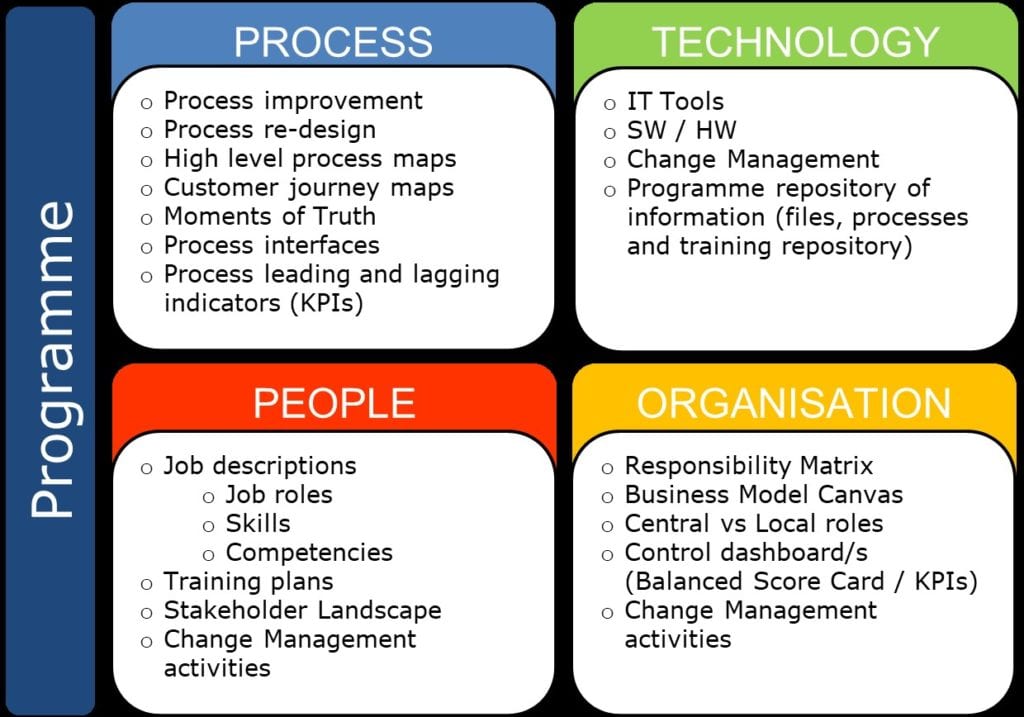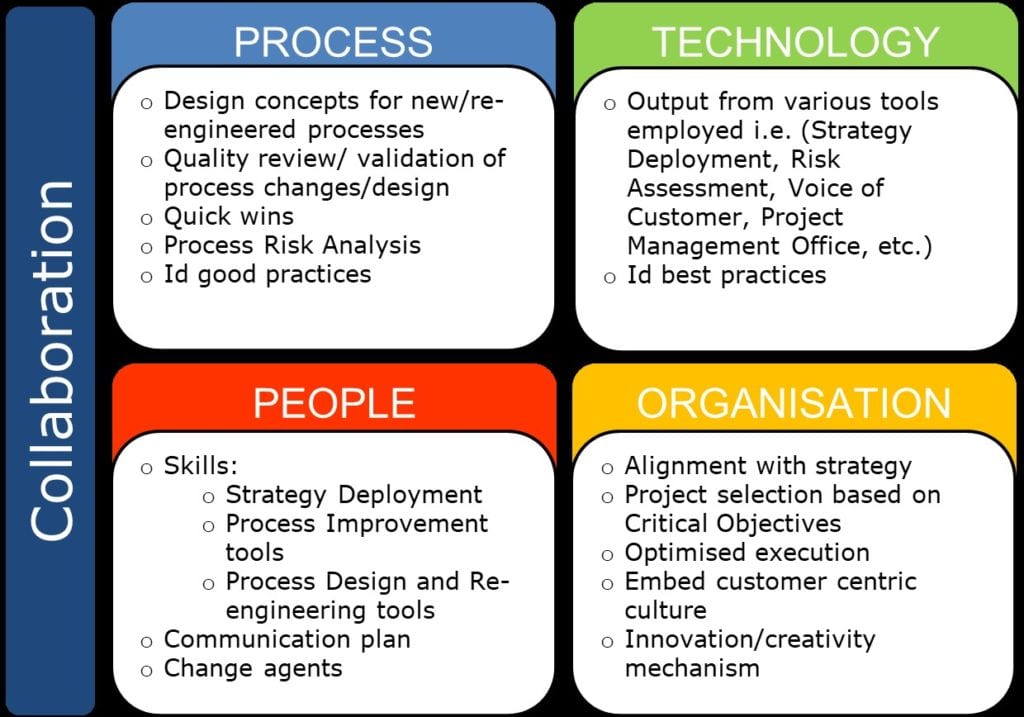PROCESSES
The Value Streams and methods organisation uses to deliver Value and carry out its work. How do these processes interact, and what is the optimum architecture?
TOOLS/TECHNOLOGY
The systems and infrastructure the organisation’s people use; this can include information technology and software, production equipment, plant and vehicles, etc.
PEOPLE
The skills, capabilities, behaviours and culture of the organisation’s people.
ORGANISATION
The structures, policies, governance and management systems used to control and support the Processes and People. Organisation also looks at management of performance and continuous improvement.
GEOGRAPHY
Multinational organisations will also address location and region-specific aspects of the model, giving a PTPOG approach
Catalyst begins Target Operating Model assignments by engaging with the organisation’s leadership in reviewing the Vision, Strategy, Strategic Essentials and Objectives/Targets. It is essential that these aspects are well thought through and “robust”. In support of this we assess the Balanced Scorecard and Business Model Canvas(es) for the organisation, and where these do not exist we will work with the leadership to generate them.
To be most effective, a Target Operating Model programme should engage and involve a wide “slice” of the organisation from multiple levels in multiple functions. The programme must also leverage existing “good practice”, and operate within an effective Governance/PMO framework.
Bringing these elements together Catalyst consultants use a Strategy Deployment-Hoshin Kanri approach, in a series of interactive workshops, to develop the initiatives and projects
required to re-engineer/develop the vision and detail for each part of the PTPO framework.
Projects and initiatives are carried out by the organisation staff, led or coached by Catalyst consultants as required. The in-depth involvement of the organisation’s people ensures outputs are credible, comprehensive and “bought-into” by the teams; this is essential to support the Change Management activities which are a vital part of the programme.
Outputs from the Operating Model re-engineering are reviewed via a Quality & Acceptance Review process, and then go on to Piloting or Quick Wins execution as required. The delivered model is then ready for implementation, which can be done with support from Catalyst. Ultimately a TOM programme drives readiness for transformation in the organisation.




